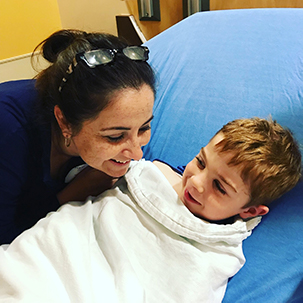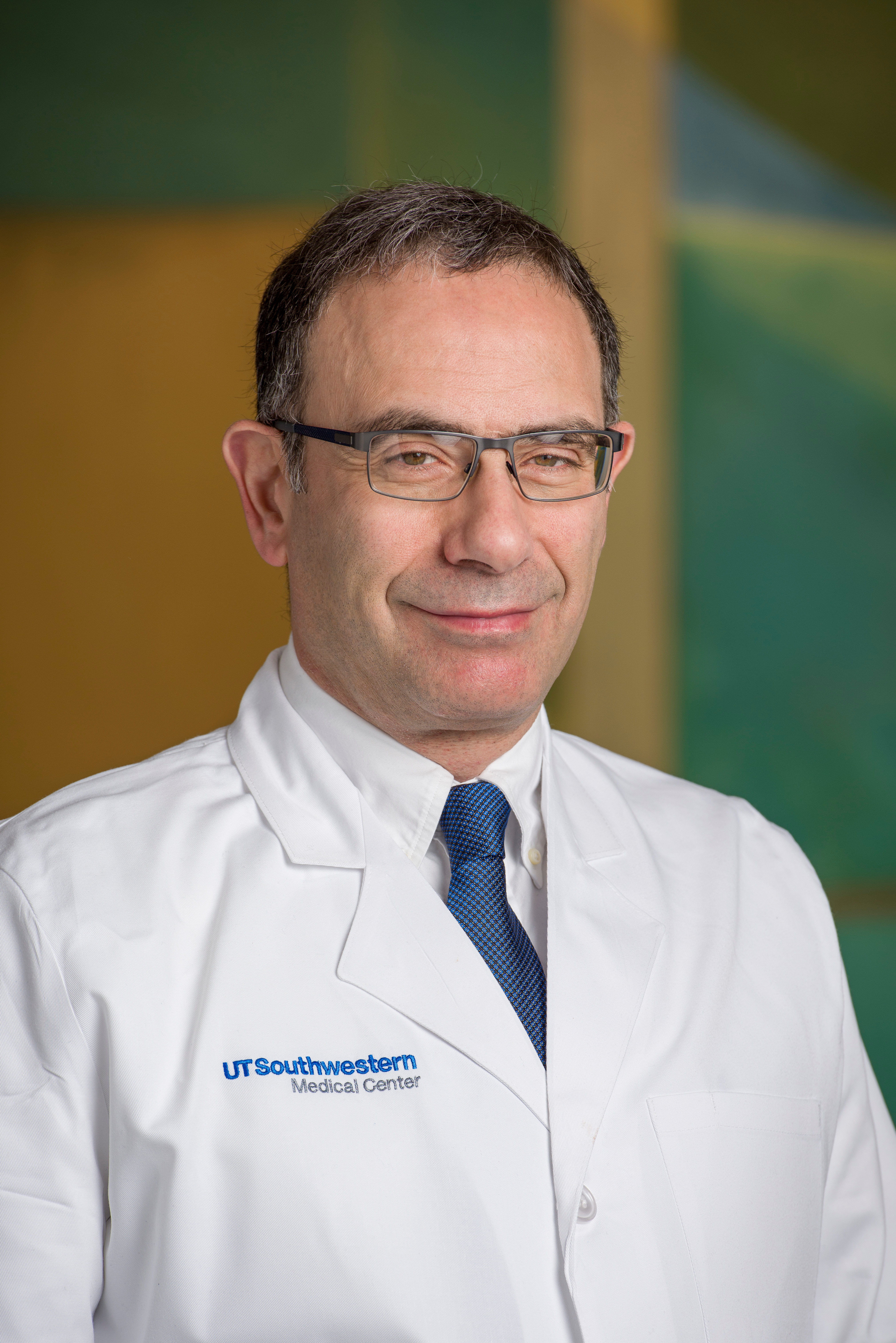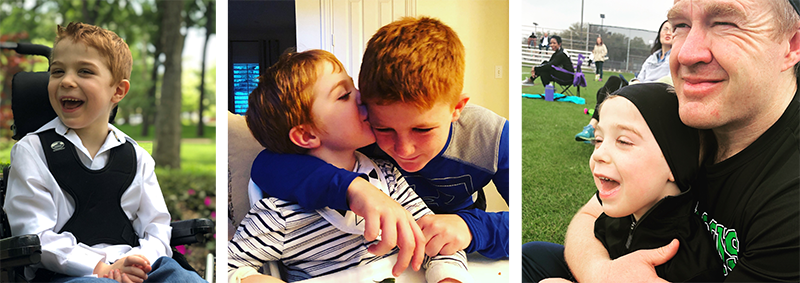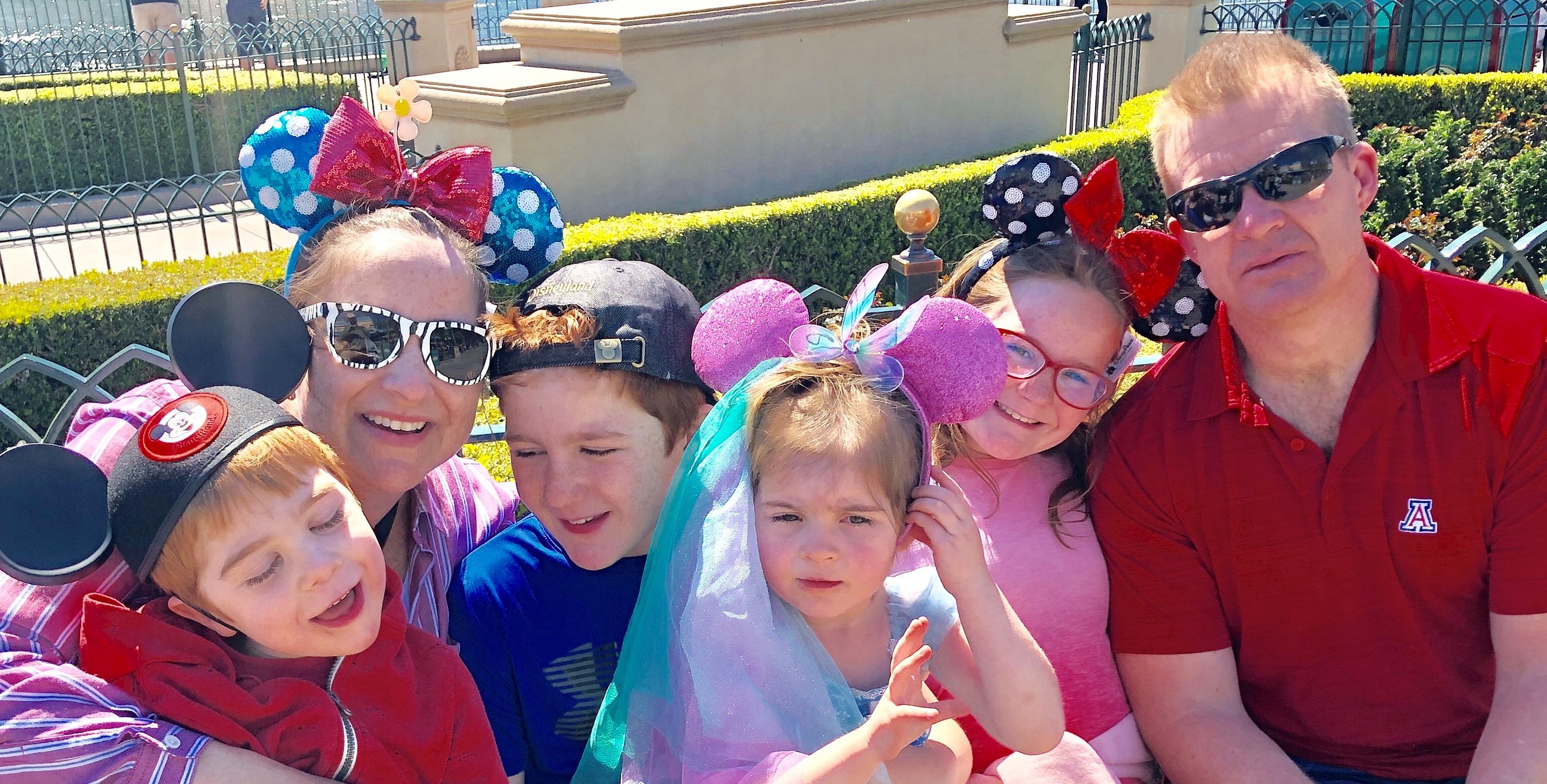Replacing genes. Restoring hope.

UT Southwestern Medical Center is uniquely poised to move gene therapy discovery into clinical trials with a world-renowned gene therapy team, state-of-the-art facilities, and a partner pediatric hospital in Dallas.
In 2017, Gina and Matthew Hann were given among the most devastating and life-altering news parents can hear: Their happy, vibrant son, Joseph, had a rare and terminal disease — so rare, in fact, that not only was there no treatment for it but there also was no research focused on even finding a treatment. They were told they should make end-of-life plans for him. Joseph was 4-1/2 years old.
Called Batten disease, Joseph’s diagnosis is an inherited and fast-paced disorder that usually starts in childhood between ages 5 and 10 and is fatal by the teens. It’s one of 7,000 known rare diseases that impact 30 million people in the U.S., half of whom are children. Collectively, these rare conditions have been dubbed “orphan diseases” because, until recently, no one has been spending the time and considerable expense it takes to treat and perhaps cure them.
A child with Batten disease develops normally until a certain age, when suddenly the brain starts degenerating and the child starts losing functions, such as sight, language, and the ability to learn. As in Joseph’s case, seizures are also often a symptom.
Desperately seeking information and resources, the Hanns were eventually put in touch via email with Berge Minassian, M.D., Chief of Pediatric Neurology at UT Southwestern Medical Center. Dr. Minassian told them about a new gene therapy program he was starting at UTSW’s Peter O’Donnell Jr. Brain Institute and its dedication to finding a cure for Batten and many similar diseases, and that was all the Hanns needed to hear. Within weeks, they put their house on the market, loaded up all four of their children, and moved from Arizona to Texas.
Texas or Bust
Even as the Hanns were relocating to the Dallas area, Dr. Minassian was actively recruiting one of the leading gene therapy scientists in the country, a molecular biologist named Steven Gray, Ph.D., who at the time was doing groundbreaking work in his research laboratory at the University of North Carolina School of Medicine Gene Therapy Center, advancing a gene-delivery method that was showing promise in solving inherited neurological disorders like Batten.
As with many diseases  in pediatric neurology, Batten disease is caused by a defect in a single gene out of the body’s nearly 30,000. Since the genomic revolution, scientists have been able to sequence the genome of every patient and identify the precise cause of an inherited disease. The only problem remaining with treating or curing single-gene defects is how to replace that one defective gene, which is just what Dr. Gray was working on — and having success with.
in pediatric neurology, Batten disease is caused by a defect in a single gene out of the body’s nearly 30,000. Since the genomic revolution, scientists have been able to sequence the genome of every patient and identify the precise cause of an inherited disease. The only problem remaining with treating or curing single-gene defects is how to replace that one defective gene, which is just what Dr. Gray was working on — and having success with.
“Replace the defective or missing gene with a working one — it’s a relatively simple idea but not simple to do,” notes Dr. Minassian.
An expert in the various genetic neurodegenerative diseases of children, Dr. Minassian is well-versed in diagnosing patients and leading the clinical side of treatment, but to fulfill his vision for the UT Southwestern gene therapy program, he needed a scientific partner to complement his expertise and advance his research.
Enter Dr. Gray. Based in part on the reputation of UT Southwestern and its close relationship to Children’s Medical Center Dallas and in part on Dr. Minassian’s vision for UTSW’s gene therapy program, Dr. Gray decided, like the Hanns, to relocate to Dallas, bringing six of his lead researchers with him.
Gene Replacement Therapy
Part of what made Dr. Gray a rising star in the gene therapy field was his development of a clinical trial to solve giant axonal neuropathy (GAN), which is another rare and fatal neurodegenerative disease that, like Batten, is caused by a single missing or mutated gene.
Also like Batten, the single missing or mutated gene that causes GAN is located in the brain, and in addition to the normal challenges involved with gene replacement therapy, the difficulty of replacing a gene in the brain is compounded by the blood-brain barrier that protects the organ. To safely bypass that barrier, Dr. Gray found a type of Trojan horse in the form of a harmless-for-humans virus called adeno-associated virus, or AAV, which, when injected into spinal cord fluid, goes effectively to the brain, where it delivers its therapeutic payload.

AAV is the only human virus that does not cause any known disease. Modern engineered AAVs do not carry any viral genes but instead haul whatever therapeutic genes scientists program them to carry.
Scientists know that gene replacement via AAV works, but producing the necessary ultra-pure, clinical grade AAV is very costly, and only a few places do it, which has made it not very accessible and caused a bottleneck in the gene therapy field.
Part of Dr. Gray’s work at UT Southwestern is overseeing one of the nation’s few facilities that manufactures AAV for patient use.
“My mission is just trying to bring this technology to bear on as many diseases and to try to open up treatments with it for as many kids as we can,” Dr. Gray says. “If we use this approach to treat a disease like GAN, we can use exactly the same approach, exactly the same virus, and just put in a different gene, and doing so opens the door to treating literally hundreds of diseases.”
Getting to a Clinical Trial
It takes a very special and rather expensive facility to produce AAV, and UT Southwestern has built one of the best in the country, but even with the AAV in hand, being able to conduct the necessary clinical trial to ensure its efficacy for a particular disease is also expensive.
Each clinical trial costs between $3 million and $5 million to develop and conduct, an expense contributing to the reason the term “orphan diseases” was coined.
“Historically, rare diseases have been very much underfunded, and they continue to be,” Dr. Minassian says.
Unfortunately, the onus of raising awareness and the necessary funds for research on an orphan disease like Batten often falls on the families of the children involved. After their initial shock and move from Arizona, the Hanns, for example, started Joseph’s Foundation for Batten Hope through the Dallas Foundation to help advance the promising work in gene therapy at UT Southwestern.
In its first year, Batten Hope raised $1 million, and in February 2019 the hard work of the Hanns and other families involved paid off, when the first stage of a clinical trial to treat Batten was registered at clinicaltrial.gov.
“In too many cases, the families are not able to raise these enormous sums of money, which makes philanthropy and state and federal assistance crucial,” Dr. Minassian says. “The Hanns have been extremely active on this front and promoting the gene therapy work that will potentially save Joseph, but they told us from the beginning that even if Joseph is not the one who gets across the finish line to end Batten disease with this work, someone else will be — it will be in time for someone.”
Even as the Hanns worked to raise funds for the research now underway, Joseph’s condition worsened throughout 2018. According to his mom, he is now mostly blind, his mobility has declined, and he frequently falls.
“It’s heartbreaking sometimes, but it’s also amazing the hope you see,” Dr. Gray says. “You see the best of humanity, of people who are faced with horrible, horrible situations and refuse to give up. And gene therapy is worth that hope. It really has the potential to transform the way medicine is done.
“Traditional medicine’s approach is to design a pill that the patient takes for the rest of his or her life. In gene therapy and gene editing, after one injection, the problem is fixed permanently. That’s our goal. That’s the dream we have — and it’s a dream that not only can come true but is.”
From Rare Diseases Comes Progress for Common Conditions
For the Hanns and other families whose children are affected by single-gene defect disorders of the brain, the work of Dr. Minassian and Dr. Gray is revolutionary. But the implications go well beyond this relatively small portion of the population.
Success with the team’s gene-replacement approaches for rare diseases could lay the foundation for treating more complex gene editing of common brain conditions, such as epilepsy, Alzheimer’s, autism, and multiple sclerosis, all of which involve multiple genes that are either mutated or missing.
“We will continue to work on the simpler version — the single-gene defect disorders of pediatric neurology — to help kids with these devastating diseases,” Dr. Minassian says. “In the process, we’ll learn how to do this and be able to scale it up to diseases where multiple genes are affected.”
Efforts underway at UTSW’s gene therapy program today and in the near future have the power to make history and transform how genetic disorders are treated. Scientists will be able to fix a genetic problem early, at its source, and thereby be able to treat what was previously an untreatable genetic disease, providing new hope to millions of children and families.
The increased volume of experiments will also lead to more sophisticated techniques and greater understanding of the mechanisms of genetics in the brain that inform the next generation of cures, the process for treating all neurodegenerative disorders, and unforeseen connections and discoveries that will impact medicine in unimaginable ways.
As Dr. Gray notes, even the technology behind vector gene therapy is constantly improving, with vectors being designed to be more efficient and more targeted. He adds that he and Dr. Minassian are motivated to make such improvements happen sooner than later because time is not on the side of their patients.

What would you do if it were your kid?” he says. “That thought remains our mission and the thing that goes through our minds every day as we work. When you’re thinking that, you don’t put that experiment off until tomorrow. You work a little bit later; you work a little bit harder. What we do is science, but it’s also a mission of hope, where we know every day about the patients who are really counting on us to do all this and do it right, do it quickly, do it responsibly, and ultimately move our laboratory research into treatment for patients.”
The UT Southwestern gene therapy program is awaiting approval to initiate six clinical trials to develop treatments for rare neurological diseases caused by a single missing gene; the team is, meanwhile, conducting research on another dozen or so diseases with the hope that the work also will lead to clinical trials. Although each disorder alone affects a small number of people, together rare diseases impact nearly 400 million people globally, two-thirds of whom are children. Most rare diseases are caused by a defect in a single gene. With the realization in recent years that the same gene-delivery systems could be applicable across many diseases, the National Institutes of Health is now encouraging support for solving rare diseases. From its base in Dallas, UT Southwestern plans to be at the forefront of those efforts.


